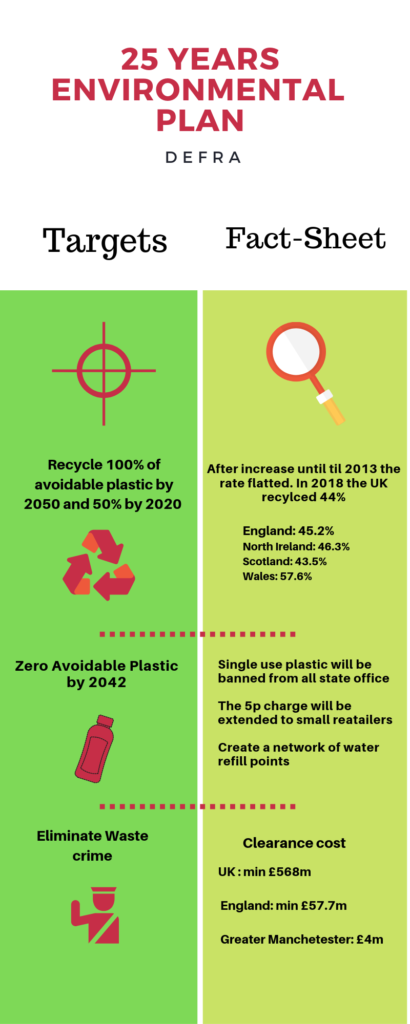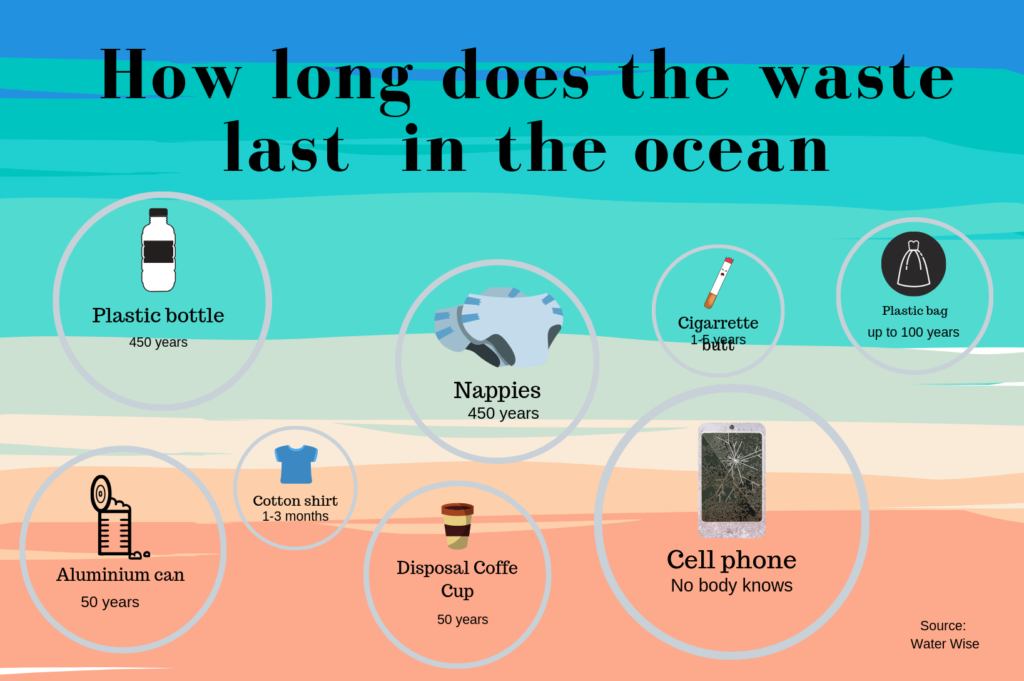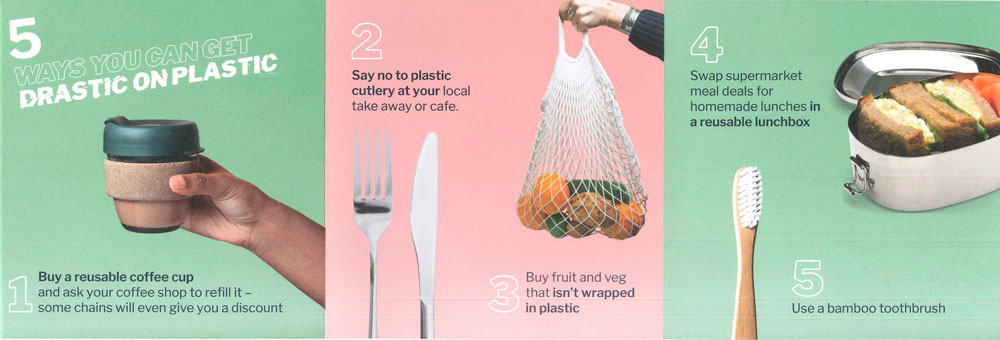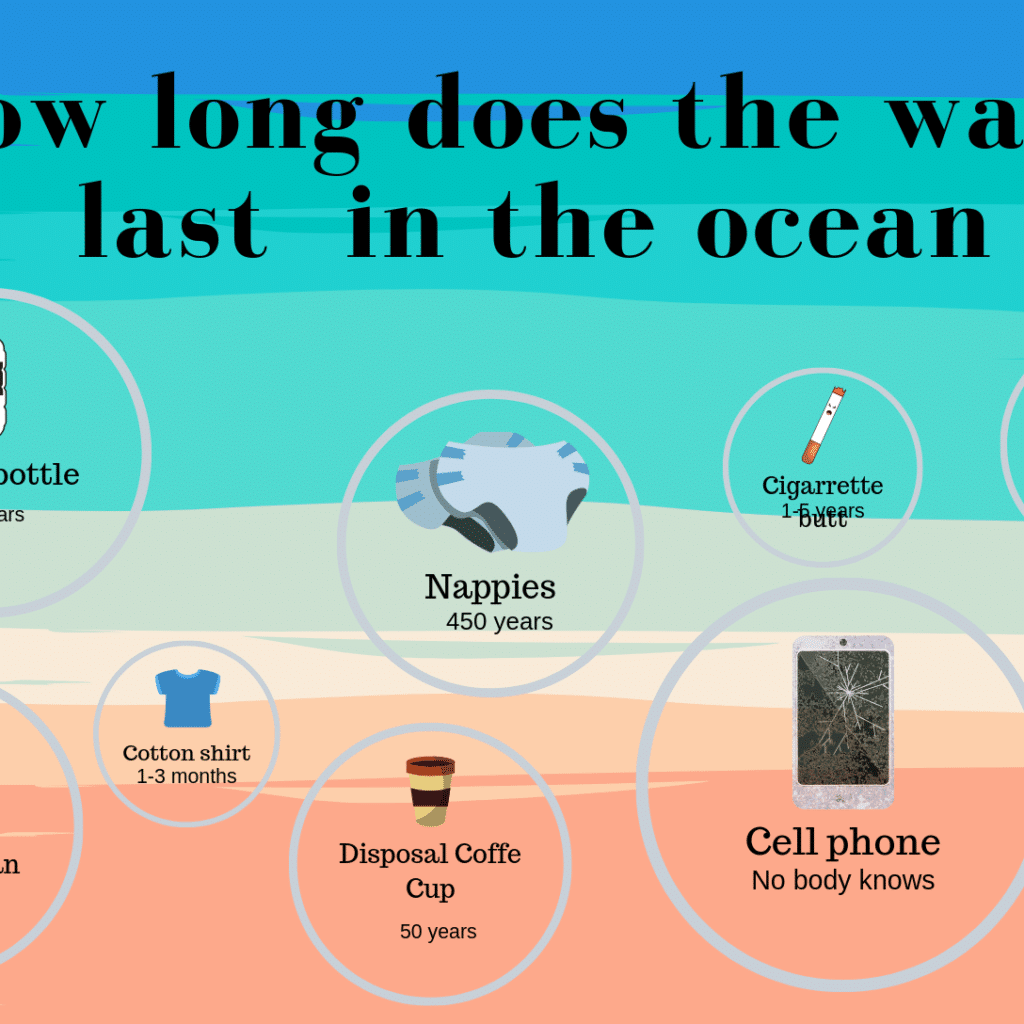9 September 2019
- Europe produced over 2.5 billion tonnes of waste in 2016
- The Household recycling rate in the UK is 45.7% on average
- GMDWA sent almost 44% for recycling
- GMWDA only recycle pplastic bottles
For years, the West has relied on third countries with softer laws for dumping its waste. But in 2017, China closed its border down. After, it was Malaysia. Other Asiatic countries have already announced plans in the same direction. Nonetheless, the World Bank forecast the global waste would increase by 70% by 2050.
In this series, we will explain how the rubbish and recycling system works in the UK, what the barriers are, and how can we pass over it. Because this is a International issue every post will have an English and Spanish version, too. If you are interested on environmental issues follow me on Twitter @Juanelev
WASTE IS A REAL PROBLEM, part 1
Create your own user feedback survey
Please, do the survey above BEFORE read the article.
In the UK, each borough deals with its household waste. The body who coordinate de boroughs -Except Wigan- in Greater Manchester is the biggest in the country. In 2018, it collected 228,000 tonnes of waste. It sent almost 44% for recycling and composting and 47,17% for recovery Energy from Waste (EFW). However, they only recycle plastic bottles, besides paper, glass, aluminium and organic. Many reports say plastics are the biggest fish in the recycling ocean.
On the last years, most of the global indicators have raised: Population, GDP, and the waste The products have three stages: production, consumption and disposal. In spite how difficult is calculate the total, Eurostat reported over 2.5 billion tonnes in Europe
The last report by the Department of Environment, Food and Rural Affairs (DEFRA) published in march of this year shows the UK generated 222.9 Millions Tonnes (MT) of waste in 2016. England was responsible of 85% of the total.

The Authorities difference between commercial waste and household waste. The first is what the economy sectors produce and the second one is what we produce at home.
Omar Pasha, the owner of Pasha Recycling, said that the problem is simply “there is too much waste”. The commercial waste, he says, is ok in the UK because the producers have to pay through Extended Producer Responsibility, so they are interested in doing well for paying less, but the problem is that there is too much packaging in the household waste.
The House of Commons stated the rate of recycling in the UK has been stuck in around 40% since 2010. Michelle Whitfield, a spokeswoman from Greater Manchester Waste Disposal Authority (GMWDA) says that some years ago, the recycling system was straightforward, “You just ask people to recycling paper and cardboard and it was quite easy to change behaviours”. In 2016 the recycling rate had grown just 5 percentage points. Only Wales exceeded a threshold of 50%. In fact, it reached 63.8%.
Why do we not recycle more?
GMDWA handle over a million tones of household waste, and its work affects to almost 2.5 million people around the region. They just sign £1bn contract with Suez. In spite of the volume, Suez only recycling a small portion of the plastic.
Whitefield: “Plastic bottles are made with high-grade plastic and it is a lot of easier to recycle. Also, there is already a market for it”.

“The rest of the plastic made out of low-grade plastic doesn’t recycle very easily. Manufacturers don’t want low-grade plastic”. For Whitefield, a problem for cooling down the recycling rate is the packaging and labelling. The manufactures make a very low quality packaging, with mixed material This makes it harder to recycle; even if the label says so. “What we are doing is speaking with the manufactures and retailers ‘actually, why don’t you just use two or three kinds of plastic in packages’”.
Andrew Clark, a lecturer in Environmental Management at the University of Salford, said that when different sort of plastic –and there are thousands of them- the pile is contaminated and it gives a lower grade product, what makes it harder to sell. “However, lower-grade plastic can be used in a wide range of applications such as plastic furniture and even clothes”.
Adam Read, Suez External Director Affairs, also blames the market. “The quality of the material we handle is too poor to make the recycling valid. The waste we got from the consumer is just a too low grade, highly contaminated, and terribly mixed”.
“Probably more contamination coming to our recycling steams now than five years ago. And that’s because people are very bond with the idea of recycling. But actually, people are putting stuff out for recycling because they think it should be recycled, not because it is recyclable”.
IS EfW the best solution posible?
Waste Management companies have developed some techniques to produce energy from the material than otherwise would be dumped. There are many different methods to recover energy from waste, though the most usual is the thermal incineration.
Professor Clark: “Recovery Energy from waste has increased 278% between 2014 and 2016 so is becoming an important alternative to landfill for residual wastes”. It reduces between 80-85% of the volume of waste. What remains is treated according to the law for reducing its potential damage. According to the providers, the EfW plants create enough energy to be self-sufficient and have extra electricity for selling to the National grid.
However, this methods don’t convince everybody. Tom Passmore, CEO in Dsposal, think it is a waste of resources: “If you just burn (the material), it is gone forever. The resources used to create the product is gone. And that’s the problem because we are running out of resources”.
“You can produce energy from elsewhere but is really hard for us to produce resources”.
Mikko Paunio, from the University of Helsinki, in contrast, says in a report “incineration stands apart as the best way to deal with Municipal Solid Waste. The incinerators avoid by all means leakage of plastic –or microplastics- in the water stream. Besides the fact that all emissions from it are highly controlled and “it does not require waste to be sorted”.
Sara Muznik, on the other hand, published in Zero Waste Europe some reasons she disagrees with this new method. Among them, it was the fact that if we rely on recovery energy from waste, we will undermine the efforts of reducing waste and improve the recycling rates. “Incinerators also support the linear economy model by extracting virgin materials only to waste them at the end. Despite having some of the most advanced waste burning facilities, Europe has taken the first step to phase out incinerators in the context of the EU Action Plan for the Circular Economy”.
The 3 R’s
Leaving aside the way to treat the disposal, what most of the people on the sector agree is in avoiding create waste in the first place. The waste hierarchy by DEFRA encourage people on Reduce, Reuse and Recycle, in that order. This is the circular economy; get the resources back to the cycle. Nevertheless, all of them concur it is very hard.

Professor Clerk: “At the moment this is difficult to achieve because the recycling capacity is not sufficient, which is why waste has been exported to third countries”.
Whitefield: “We need to get much better at waste prevention”. The website Recycling for Greater Manchester (link) gives tips for reusing the items.
Tom Passmore: “One of the reason, but not the whole story, you can’t recycle everything. Clinical waste has to go to incinerators, asbestos has to go to landfills… so you never get the 100%. Another reason is government authority measures. So they stop money from going to local authorities”.
Waste is something that comes alongside the production, and we need to deal with it. Authorities, companies, NGO’s, people… most of us know we shall be more responsible for our disposal. We will see on the next post of this series where are the weakest point on this chain.

